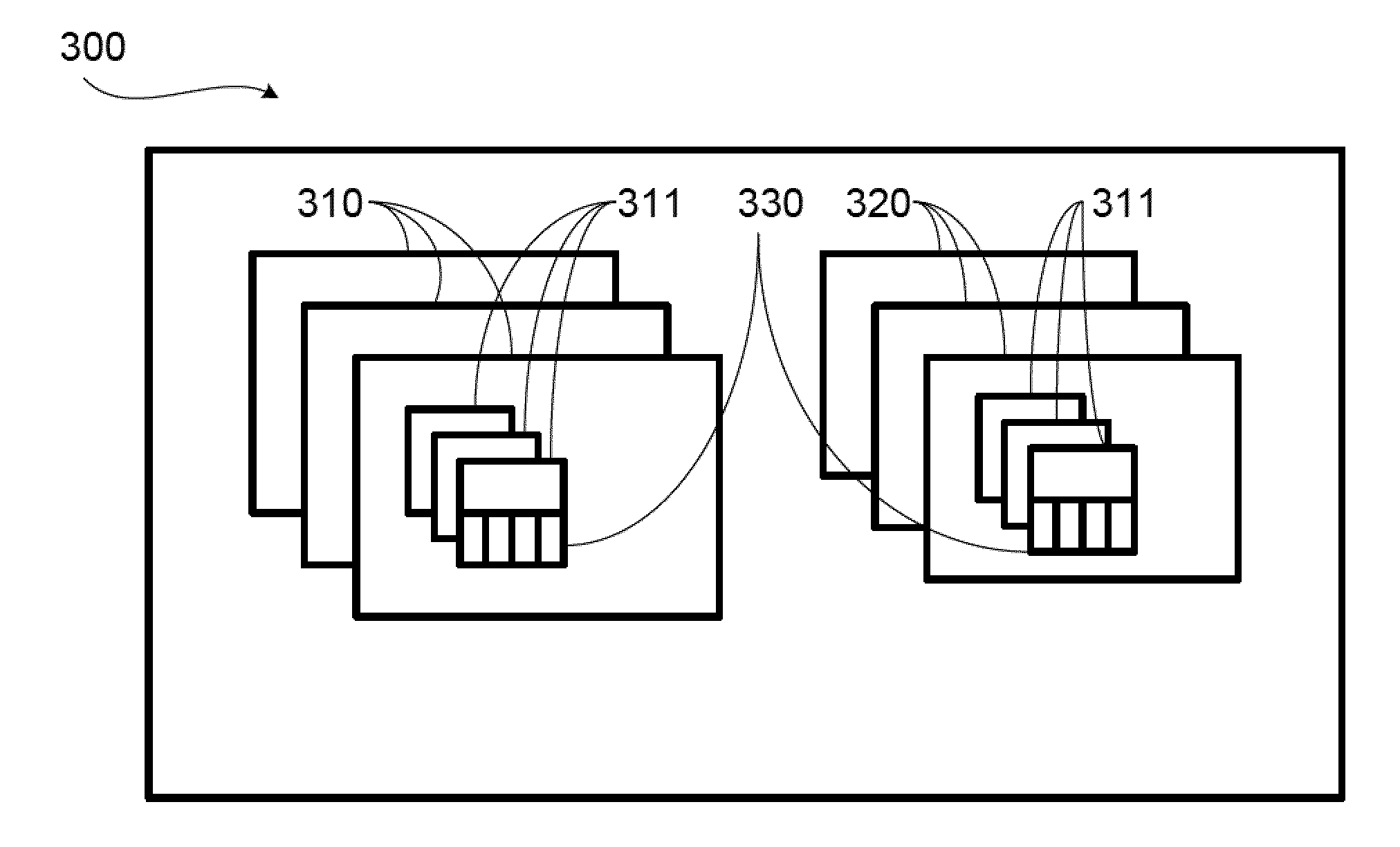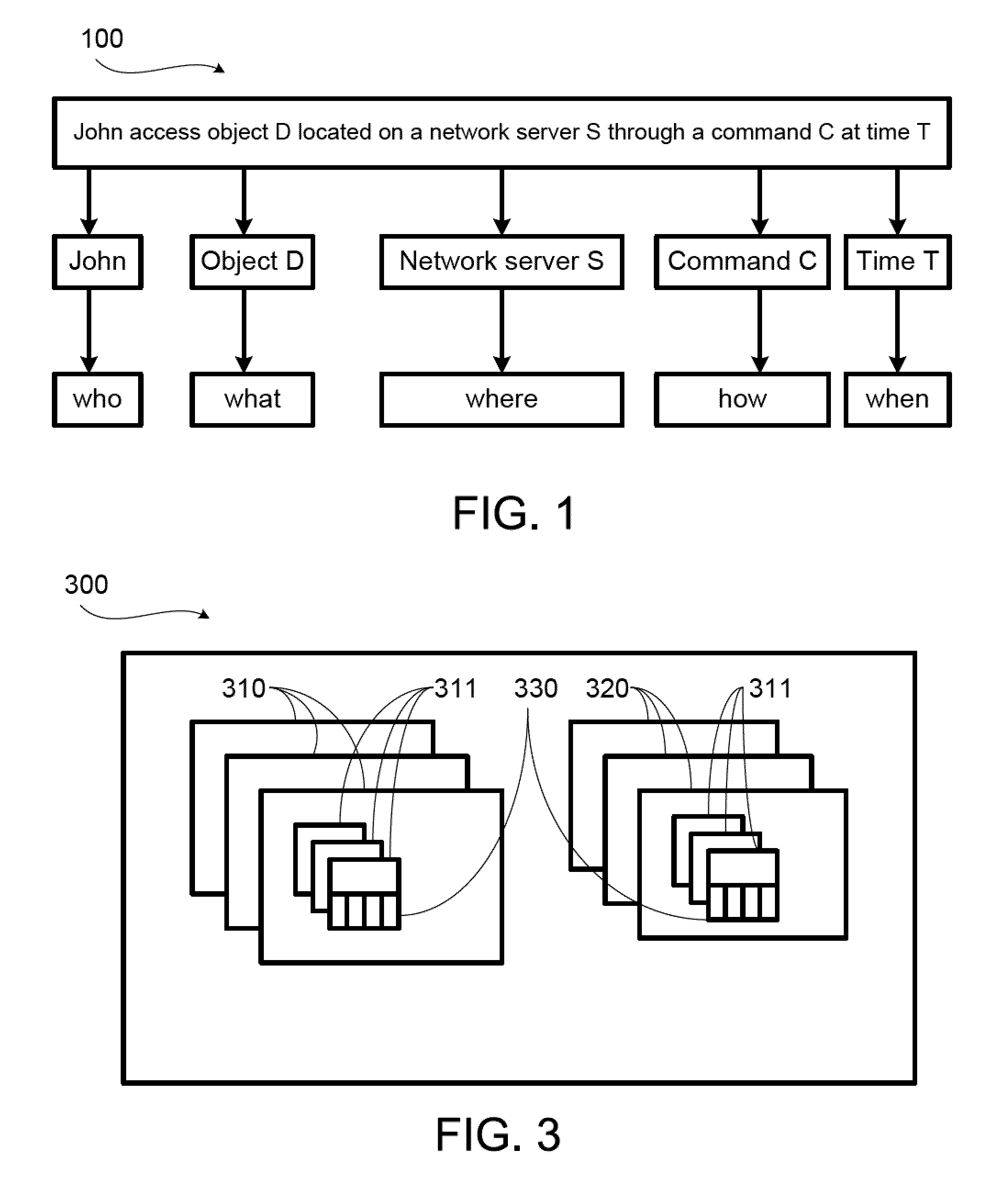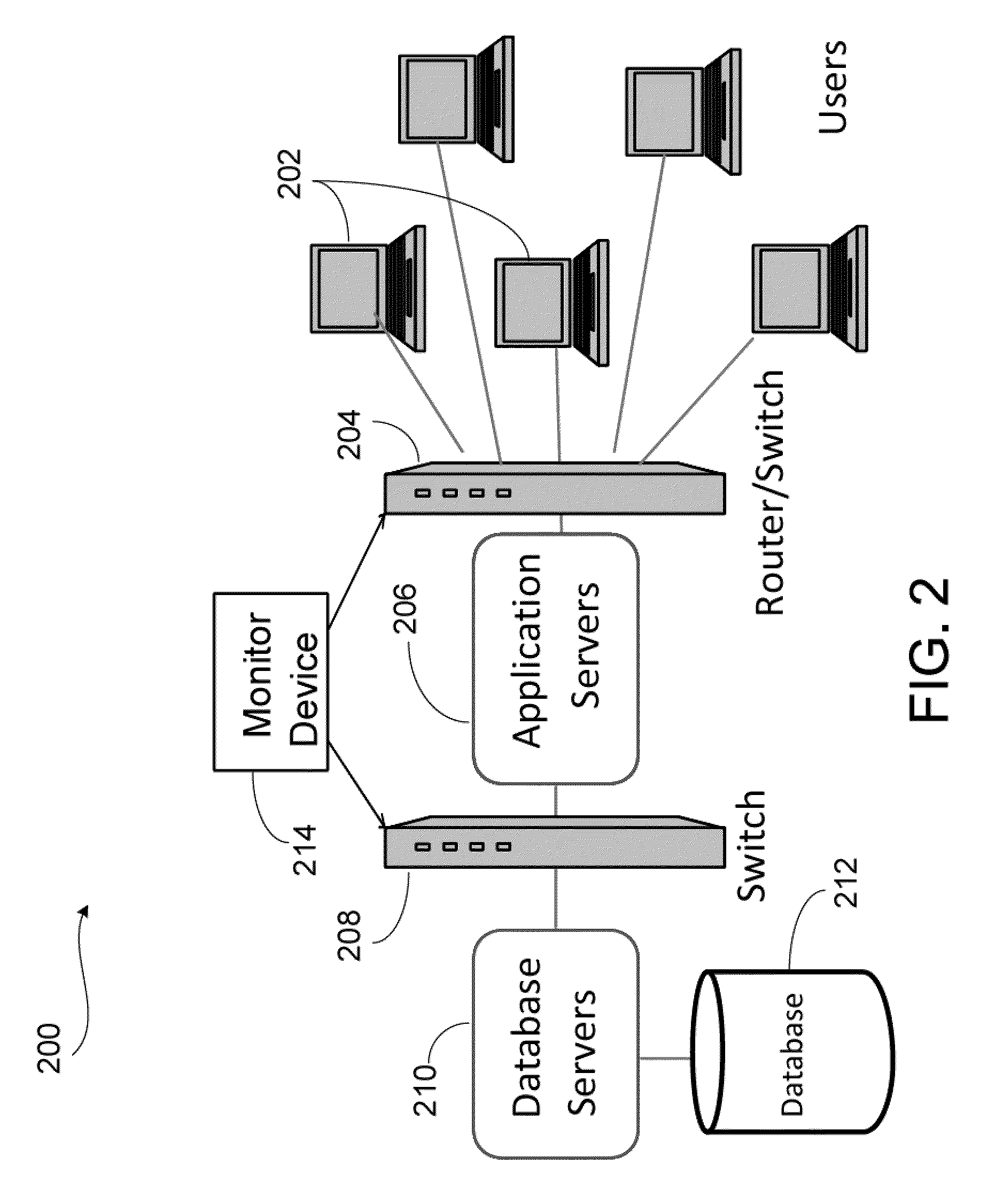Method for adaptively building a baseline behavior model
a behavior model and baseline technology, applied in the field of baseline behavior models, can solve the problems of information security becoming a crucial issue, and the conventional access control mechanism cannot effectively prevent the leakage of information caused by the leakage of information
- Summary
- Abstract
- Description
- Claims
- Application Information
AI Technical Summary
Problems solved by technology
Method used
Image
Examples
Embodiment Construction
[0022]FIG. 1 shows a schematic view of a model for abstracting a user's activity in a network data environment into five essential elements according to the invention. As shown in FIG. 1, user John accesses a data object D located on a network server S through a command C at time T can be decomposed into five basic elements (5W), namely, John(Who), D(What), S(Where), C(How) and T(When). The baseline behavior model of the present invention is to capture the five elements of all the activities so that when an activity resulting in a condition defined by the baseline behavior model, an alert event will be issued and proper actions taken. These five elements are defined and explained in the sister application for System And Method For Detecting Behavior Anomaly In Information Access, U.S. patent application Ser. No. 12 / 431,946, filed on Apr. 29, 2009, the specification of which is incorporated in its entirety by this reference.
[0023]FIG. 2 illustrates a network architecture 200 supporti...
PUM
 Login to View More
Login to View More Abstract
Description
Claims
Application Information
 Login to View More
Login to View More - R&D
- Intellectual Property
- Life Sciences
- Materials
- Tech Scout
- Unparalleled Data Quality
- Higher Quality Content
- 60% Fewer Hallucinations
Browse by: Latest US Patents, China's latest patents, Technical Efficacy Thesaurus, Application Domain, Technology Topic, Popular Technical Reports.
© 2025 PatSnap. All rights reserved.Legal|Privacy policy|Modern Slavery Act Transparency Statement|Sitemap|About US| Contact US: help@patsnap.com



